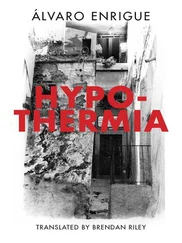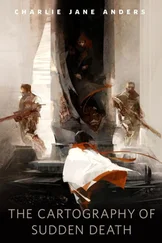Giustiniani kept huntsman’s hours, which means that when Caravaggio arrived he must have been in his office, reviewing the end-of-day accounts from the previous afternoon. Or in the courtyard itself, brushing the manes of his horses before the grooms fed them. He would already have drunk his cup of chocolate, the only luxury he allowed himself. Someone must have been sent to ask him what to do with the madman who was outside with a horrible painting. If Giustiniani was in the courtyard, it would likely have been one of the cooks who reached him with the news: A dreadful sight. The painting or the madman? Both, but especially the painting. Give him something to eat; let him leave the thing in the kitchen. And he must have hurried to the studiolo to retrieve from his writing desk the rest of the money he owed the painter. The entry is set down in his books in his own hand: “Ago 14 / 60 scudi / Pitt Meritzio.” Maybe it was then that he began to turn over the possibility of hanging the painting here, where he would be the only one to see it.
For years it was thought that this eccentric behavior — commissioning a painting in order to be its only viewer — was due to the brutal violence displayed on the canvas: the heroine yanking the tyrant’s tangled hair with one hand while with the other she slits his throat like a pig’s, his head already twisted and about to come off, the streams of blood, the engorged nipples, the grotesque excitement of the serving woman who holds a cloth to receive the remains when the last tendon is severed. But this doesn’t explain the painting’s trajectory: at some point Giustiniani gave it — curtains and all — to Ottavio Costa, another Genovese banker, partner in the most substantial of Giustiniani’s Vatican investments, and a hunting companion.
There’s no record of the transfer of the painting, but it ended up in the collection that Costa left when he died, along with another work originally bought by Giustiniani, painted by Caravaggio and featuring the same woman.
In 1601, the celebrated prostitute Fillide Melandroni, who had served as model for Judith and also for Mary Magdalene in the painting Martha and Mary Magdalene , was arrested one night at one of the entrances to the Palazzo Giustiniani; she was in the company of her pimp, Ranuccio Tomassoni.
It’s likely that the whore was Giustiniani’s lover and that after the scandal of her being arrested at his very door — a tip-off, surely; the vengeance of a lesser moneylender hurt by the banker’s large-scale operations — he must have gotten rid of the two paintings in which she appeared.
The loss must also have been hard for Caravaggio: he didn’t paint Fillide Melandroni again after this arrest, and she was far and away his most spectacular model: not just a figure of exceptional beauty, but a collaborator with the gift of a unique dramatic sense — she is also Saint Catherine of Alexandria in the monumental work retained by del Monte, which today can be seen in the Thyssen-Bornemisza collection in Madrid.
Incidentally, Ranuccio Tomassoni was the man Caravaggio killed on the Campo Marzio tennis court a few years later. It was a murder long foreshadowed, with both men making frequent visits to the headquarters of the Roman police to report each other or to be arrested following those reports — all stemming from shouting matches and knife brandishings that grew gradually more severe. Surely the nights that Fillide spent at Merisi’s studio weren’t devoted solely to the glory of art, and their nearness wasn’t only professional, on either side: he didn’t just paint, and she didn’t just sleep with him for money.
At some level, Giustiniani and Caravaggio must have been conscious that they were sharing the same woman — who belonged to Tomassoni. In addition, the banker was a political ally and comrade in intellectual dissidence of Cardinal del Monte, known by all to occasionally offer his monumental cardinal’s ass to be buggered by Caravaggio with all the elemental hunger of the painter’s years of want. Never were the connections among politics, money, art, and semen so tight or so murky. Or so unashamedly happy, tolerant, and fluid. Giustiniani dispatched his Lombardy boars, Caravaggio dispatched his Venetian cardinal, Fillide dispatched both men. Everyone was happy.
These were also the years when Merisi discovered the chiaroscuro that forever changed the way a canvas can be inhabited: he did away with the foul Mannerist landscapes — the saints, virgins, and great men posing with intelligent gaze on a backdrop of fields, cities, sheep. He shifted the sacred scenes indoors to focus the spectators of his paintings on the humanity of the characters. Fillide was his vehicle for moving the machinery of art a step forward. Not a saint playing a saint, but a woman stripped of superior attributes, and in action; she was a poor woman, as she had to be for the Counter-Reformation credo to make sense. Before Caravaggio, biblical figures were portrayed as millionaires: the richness of their garments was the reflection of spiritual bounty.
An affluent saint in a landscape stands for a world touched by God. A saint in a room stands for humanity in the dark: a humanity distinguished by its ability to continue to believe, in a world in which faith is already impossible; a material humanity smelling of blood and saliva; a humanity that no longer watches from the sidelines, that does things.

Game. The poet flung his racket on the ground, betraying his desperation for the first time. The artist sprawled on the pavement, his arms outstretched, his smile beatific. Set to the Lombard, cried the mathematician, one — one; tiebreak for the court. Osuna approached the poet. He said into his ear that he had to stop acting like a child and get ready to kick and bite if necessary: If you’re not on the service side, you’re fucked; when you were on the receiving side you couldn’t even get it near the motherfucking dedans.

He took the palm-leaf cone. What are they, asked Cortés through Malinche. By now she had learned enough Spanish to interpret directly. Pumpkin seeds roasted in honey, said Cuauhtémoc to Malitzin. The conquistador waited for the Spanish version, took a handful of seeds, and ate them one by one, his eyes on the ball game. They were sitting in the front row, with their legs dangling over the wall, while beneath them the athletes were breaking their backs trying to keep the ball from hitting the ground without touching it with their hands or feet.
During the break before a serve, Cortés showed signs of curiosity — something he did possess, despite his reputation. Which ones represent the underworld and which ones the heavens, he asked Malitzin to inquire. When Cuauhtémoc heard the question — deposited perhaps too close to his ear by the translator — he spat the pumpkin seed shells so that they landed at the very edge of the court. It’s Apan against Tepeaca, he said, shrugging his shoulders slightly. Then he got up and went to bet a few cacao beans on Tepeaca.
Hernán Cortés and Cuauhtémoc had met in the infamous year of 1519, when the visit of the fearsome ambassadors of the king of Spain to the imperial city of the Mexicas was still a courtesy call. Emperor Moctezuma had tried to dissuade his visitors from coming to the city of Tenochtitlan by all the means at his disposal — especially bribery — and they had resisted every temptation, held in check by their captain’s promise that the imperial gold would be theirs as soon as they had conquered the trumpeted Aztec capital. Moctezuma’s grand fuckup — the mistake that changed the world — was not having killed them when they first disembarked, before they were of any consequence.
Читать дальше













